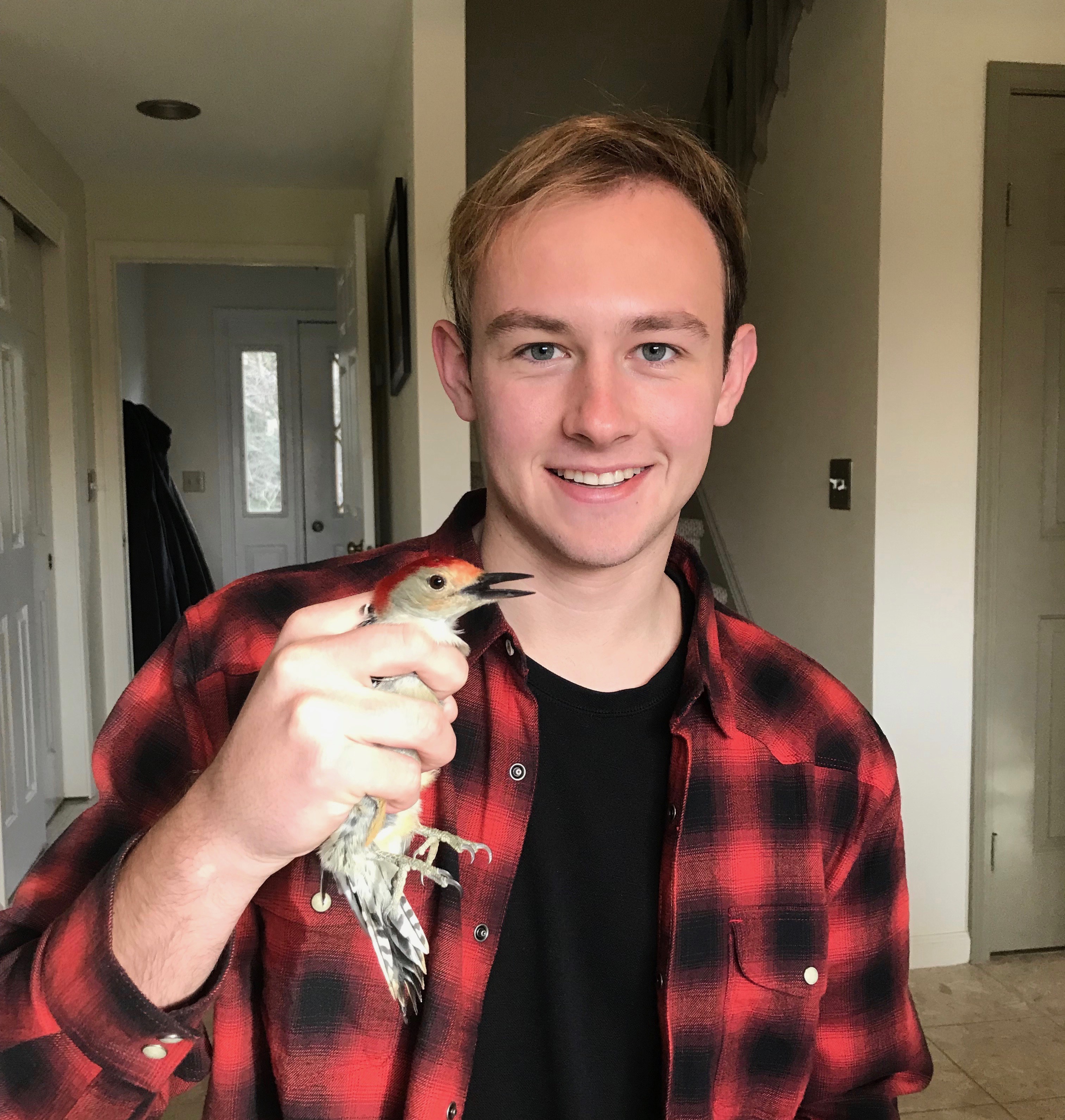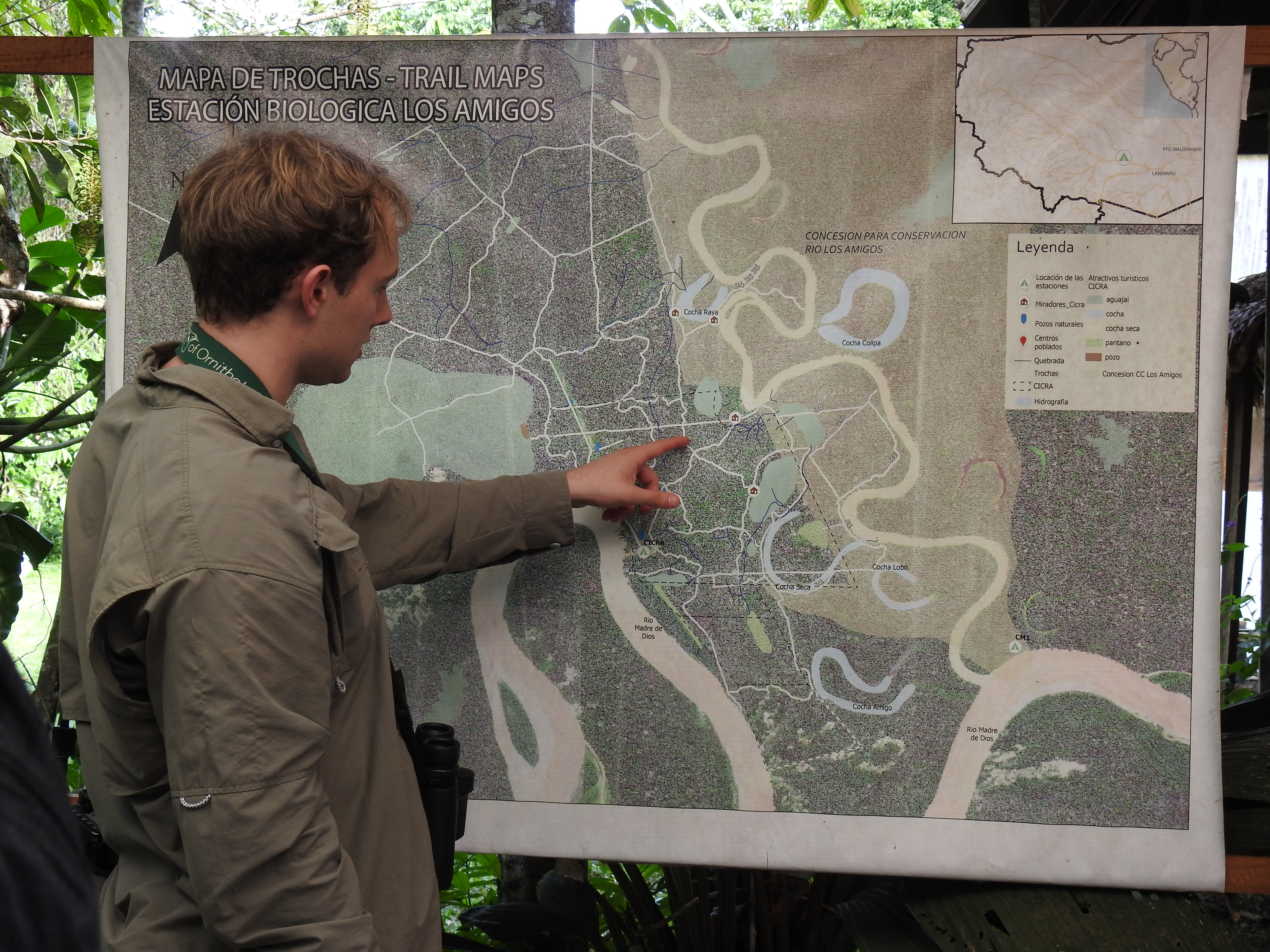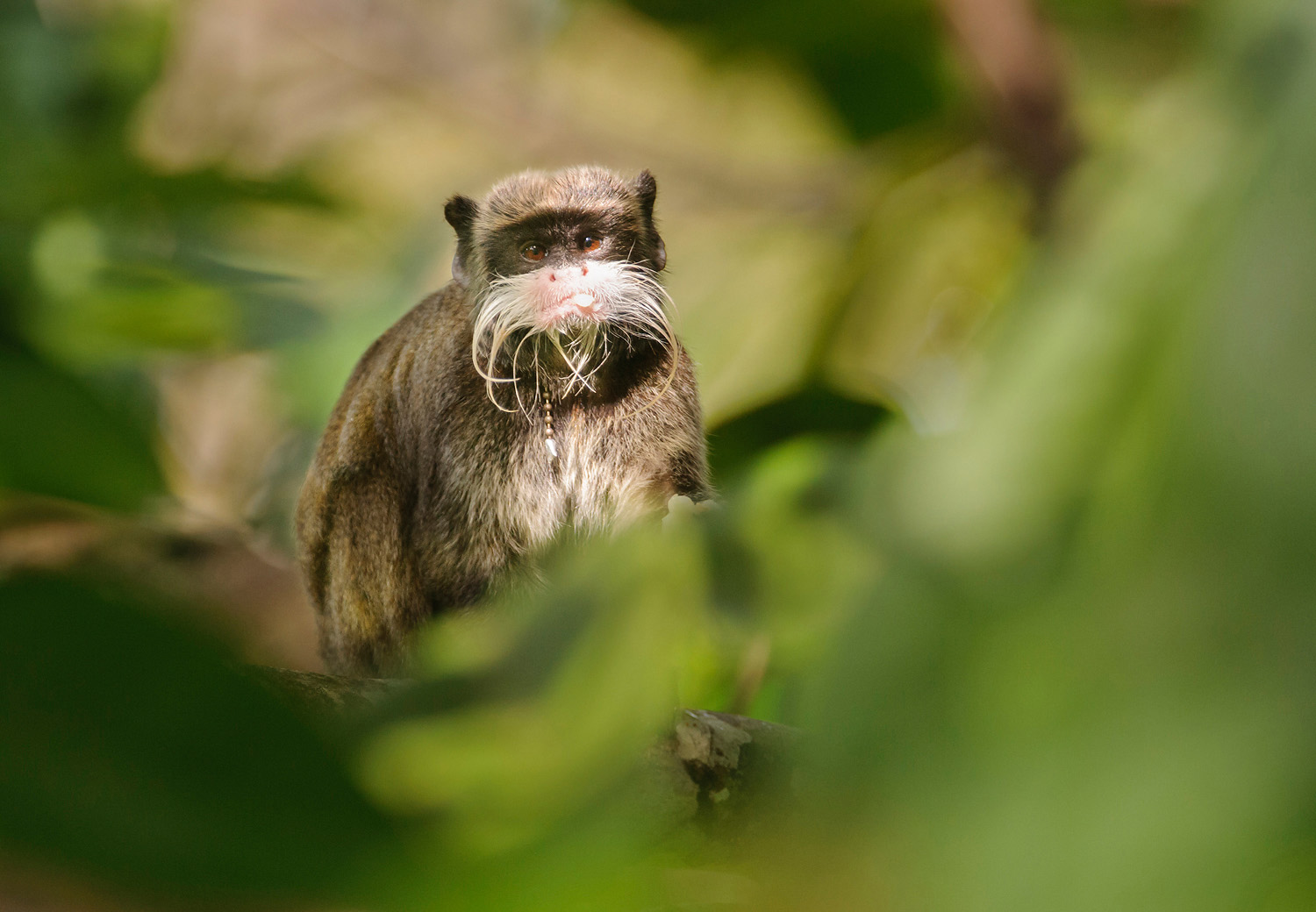University of British Columbia PhD candidate Micah Scholer has visited Peru enough times to know the lay of the land and discover some of the incredible birds the country has to offer. Read about how he got into birding, the research project he is conducting in the Amazon, and some of his adventures in the field.
How did you become interested in birds?
Growing up in northern Minnesota I spent lots of time sitting at the end up my grandparents dock watching eagles and ospreys fish for their supper. Like many other folks, these big impressive hunters of the sky were a gateway bird for me. I became increasing captivated by raptors and, as I got older, I formalized this interest by volunteering with a birds-of-prey rehabilitation program at the University of Minnesota Raptor Center while pursing my undergraduate degree. Over the years my passion for working with birds-of-prey never faltered, but I did find myself becoming increasing aware of and interested by some of their smaller, easier to overlook cousins. Now I take pleasure in watching and studying all bird species, especially those in the tropics where the creativity of forms and functional roles birds play seems to have no limit.
What is your PhD research project about?
I use mist-net surveys and bird banding as a tool to understand the population structure and dynamics for a wide range of Peru’s resident bird species. Just as most people can tell the difference between a teenager and someone in their mid-thirties, experienced bird banders can use molt and plumage patterns to distinguish between different ages and sexes of birds in the hand. This is important to know because behavior and fitness can vary at different points during a bird’s life. For example, survival, habitat use, migration routes and timing can vary by sex and age of individual birds. By temporarily capturing and marking birds with a small, uniquely numbered aluminum band on their leg we are able to track the survival of individuals across years by visiting these same locations each season and seeing who is still around. Combined with what we are learning about their population age structure, we can then build models to predict how populations of birds may increase or decrease in the future with a changing environment.
What drew you to the Andes-Amazon (Manu region) of Peru to study birds?
There are few places in the world that boost such hyper diverse plant and animal communities as the Amazon. Fewer still that are easily accessible to researchers and the public. The Manu road is one of them with roughly 1100 birds species found in the region. As a researcher, this offers me the opportunity to study many species simultaneously and allows us to make broader generalizations about the patterns in survival we are studying.
What are your favorite birds to see along Manu Road, and why?
High elevation hummingbirds around Amazon Conservation’s Wayqecha Biological Station are definitely my favorite. Further down the gradient, especially in the lowlands, many hummingbird species remain tantalizingly out of view in the canopy or, more commonly, are seen visiting the feeders and other flowers planted around lodges to attract them. But higher up, the canopy is often low and there is an abundance of flowering Oreocallis year round providing excellent opportunities to watch hummingbirds be hummingbirds. They are such pugnacious little things and watching them spar over feeding rights never tires for me. Of course, I still have a soft spot for raptors and am always pleased when I get to chance to see the Black-and-chestnut or Solitary Eagle soaring above the canopy. Why? Just because they are so darn awesome.
Why do you choose to stay at Amazon Conservation’s field stations?
The Wayqecha Biological Station has it all. It’s got amazing bird diversity and the birds are easier to see here because of the canopy height compared with many other places. It’s also probably the best place to spot orchids as well (another passion of mine). Without a doubt it has the best views of the Andes and Amazon that I get to see every morning. And, importantly, the staff are first-rate and have made me feel welcome each year I’ve arrived. You won’t find a nicer group of folks looking after you than there.
Do you have a favorite story or experience to share from your time in the field?
I’ve always had a lot of fun hitching rides in the back of trucks to travel up and down the Manu road. It’s a great way to see the forest and birds…as long as it’s not raining! I remember the first time I traveled to Paucartambo from Wayqecha, by myself to get supplies for our field crew. I spent most of the day making purchases and it was already getting dark by the time I finished. Not wanting to miss out on a morning of work back at the lodge, I began to look for a ride and soon found one in the back of a truck; probably used to transport bananas or timber from the lowlands to Cusco. We loaded my supplies and I climbed in to find five other people already there. Each of them was bundled in a thick woolen blanket and they looked at me questioningly in my thin windbreaker jacket and quick-dry pants. As the truck departed everyone grabbed a fold of their blanket and threw it over their heads covering themselves completely. I, on the other hand, sat next to several crates filled with chickens (also covered by wool blankets incidentally) and curled into a ball and thought “No one ever told me the tropics could be SO cold!” I have since learned from that experience and never venture through the highlands without proper warm clothing and a good blanket!







Leave A Comment